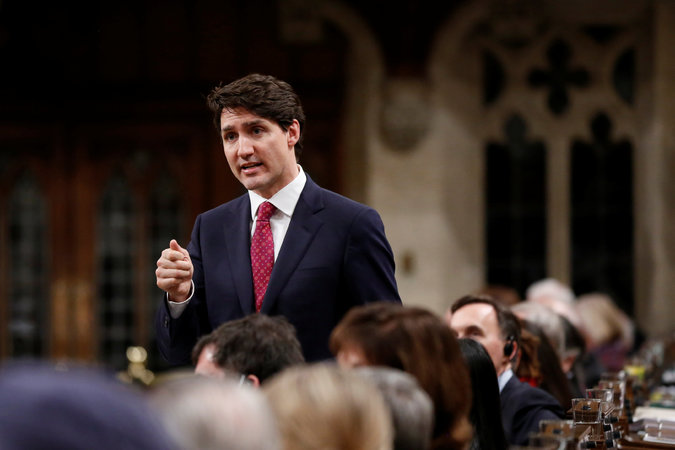Uncertainty Remains On Full Canada Tariff Elimination

Table of Contents
The Current State of Canada-US Trade Relations
The Canada-US trade relationship, despite the long-standing Canada-United States-Mexico Agreement (CUSMA), remains impacted by lingering tariff issues. Understanding the current state of bilateral trade and the ongoing negotiations concerning Canada tariff elimination is crucial for businesses and policymakers alike.
- Current Tariff Rates: While CUSMA largely eliminated tariffs on many goods, some remain, particularly in sensitive sectors like agriculture and dairy. These existing tariffs, along with the potential for future adjustments, contribute to the uncertainty surrounding full tariff elimination.
- Recent Trade Negotiations: Recent discussions between Canada and the US have focused on addressing specific tariff concerns, but a comprehensive agreement on complete elimination remains elusive. The ongoing negotiations highlight the complexities involved in achieving a fully tariff-free environment.
- Challenges and Obstacles: Significant challenges include differing domestic policies, lobbying efforts by specific industries, and the broader context of global trade relations. These factors influence the pace and direction of tariff reduction negotiations.
- Trade Volumes and Economic Impact: Despite the challenges, bilateral trade between Canada and the US remains substantial. However, the uncertainty surrounding tariffs can impact investment decisions, trade volumes, and overall economic growth. Precise figures fluctuate, but analysis from organizations like the Conference Board of Canada regularly updates the economic impact of trade policies.
Sectors Most Affected by Tariff Uncertainty
The uncertainty surrounding Canada-US tariff elimination significantly affects specific industries. The impact of tariffs varies depending on the sector and the nature of the goods involved.
- Agriculture: The agricultural sector, particularly dairy and poultry, remains highly sensitive to tariff changes. Existing supply management systems and protectionist measures create significant obstacles to complete tariff elimination in this sector. The impact of tariffs on agricultural commodity prices and farmer incomes is a continuing area of concern.
- Automotive: The automotive industry, a significant player in both economies, is deeply intertwined through complex supply chains. Tariff adjustments significantly affect production costs, competitiveness, and investment decisions within this sector. Any changes in tariffs have a substantial knock-on effect.
- Lumber: The lumber industry has historically experienced significant tariff disputes between Canada and the US. Ongoing discussions on softwood lumber tariffs highlight the continuous need for addressing trade concerns in this sector. Fluctuating tariffs directly impact export volumes and profitability for Canadian lumber producers.
- Tariff Impact Analysis: Numerous studies have been conducted assessing the impact of tariffs on various Canadian industries. These studies often show a direct correlation between tariff levels and economic indicators like employment, investment, and productivity.
Political and Geopolitical Factors at Play
The political landscape, both domestically and internationally, plays a crucial role in determining the future of Canada-US trade relations and the likelihood of full tariff elimination.
- Domestic Political Factors: Decisions regarding tariffs are significantly influenced by domestic political priorities, including considerations of regional economic impacts and industry lobbying efforts. Election cycles and shifts in government priorities can affect the negotiation process.
- International Relations: The broader context of international relations and global trade dynamics also plays a critical role. Changes in the global economic climate, new trade agreements, and shifts in geopolitical alliances can all influence the direction of Canada-US trade policy.
- Other Trade Agreements: The existence of other trade agreements, such as CUSMA, creates a complex framework within which tariff negotiations must operate. The interpretation and implementation of these agreements have an ongoing effect.
- Lobbying Efforts: Various industry groups and interest organizations actively lobby governments on issues related to tariffs. Understanding these pressures is essential for grasping the dynamics of tariff negotiations.
Economic Forecasts and Predictions
Economic forecasts regarding the full elimination of tariffs on Canada-US trade present a mixed outlook, with varying predictions depending on the assumptions made.
- Potential Economic Benefits: Complete tariff removal could significantly boost bilateral trade, leading to increased economic growth, job creation, and lower prices for consumers.
- Potential Risks and Downsides: However, the complete removal of tariffs might also create challenges for some domestic industries, particularly those that rely on protectionist measures. Adjustments and potential job losses in certain sectors need to be considered.
- Growth Projections: Various economic institutions and analysts offer different growth projections based on varying assumptions about tariff elimination. These projections often incorporate different models, data sets, and assumptions regarding consumer and business reactions.
- Trade Forecast: Reliable forecasts for the future of Canada-US trade often highlight the uncertainties inherent in predicting global economic conditions and political decisions. Analyzing several predictions offers a more balanced view.
The Future of Canada Tariff Elimination
In conclusion, the complete elimination of Canadian tariffs on goods imported from the US remains uncertain. The interplay of political considerations, economic forecasts, and sector-specific impacts creates a complex situation. The future trajectory depends on navigating these challenges and finding a balance between economic growth and protecting sensitive sectors. Significant factors influencing the situation include domestic political priorities, global trade dynamics, and the potential for industry-specific disruptions.
To stay informed about future developments and engage in discussions on Canada-US trade relations, follow future updates on Canada tariff elimination. Learn more about the impact of tariffs on Canadian businesses and stay informed about the ongoing negotiations concerning Canada tariff elimination. The future of this vital trade relationship is a story that continues to unfold.

Featured Posts
-
 Holstein Kiel Holds Mainz To Draw Staving Off Relegation For Now
May 12, 2025
Holstein Kiel Holds Mainz To Draw Staving Off Relegation For Now
May 12, 2025 -
 Alex Palous Pole Position Andrettis Indy Car Woes Continue
May 12, 2025
Alex Palous Pole Position Andrettis Indy Car Woes Continue
May 12, 2025 -
 Nba Sixth Man Of The Year Is It Payton Pritchard
May 12, 2025
Nba Sixth Man Of The Year Is It Payton Pritchard
May 12, 2025 -
 Bellators Freire Set For Clash With Former Ufc Champion Aldo
May 12, 2025
Bellators Freire Set For Clash With Former Ufc Champion Aldo
May 12, 2025 -
 Blue Origin Scraps Launch Due To Vehicle Subsystem Problem
May 12, 2025
Blue Origin Scraps Launch Due To Vehicle Subsystem Problem
May 12, 2025
